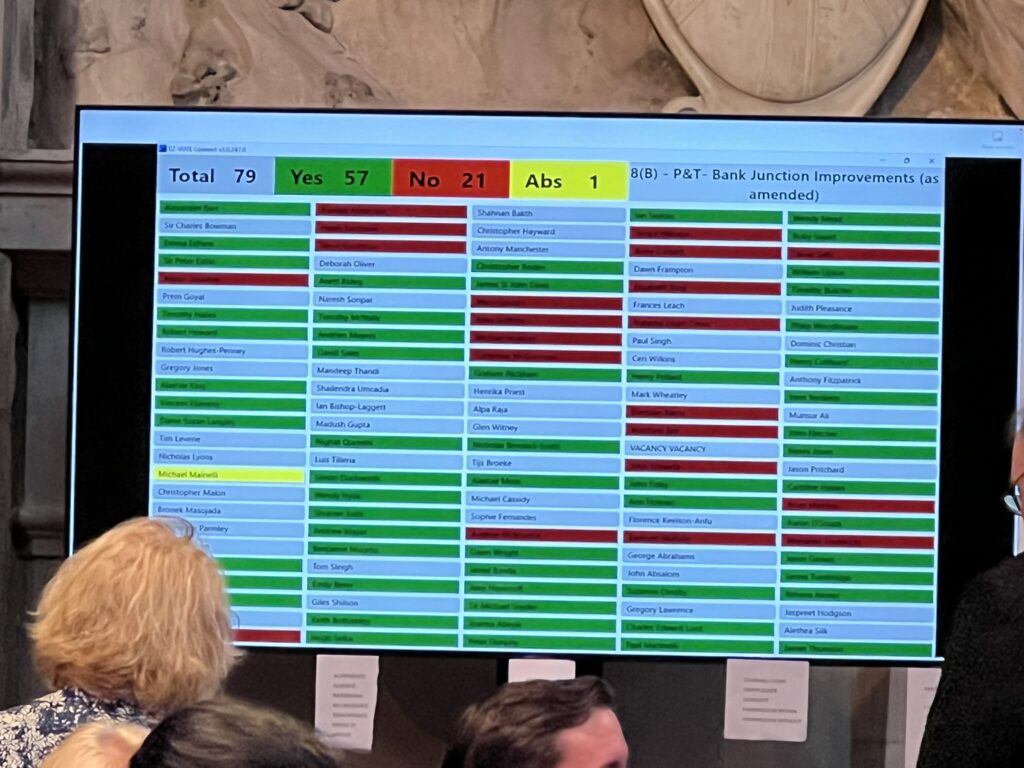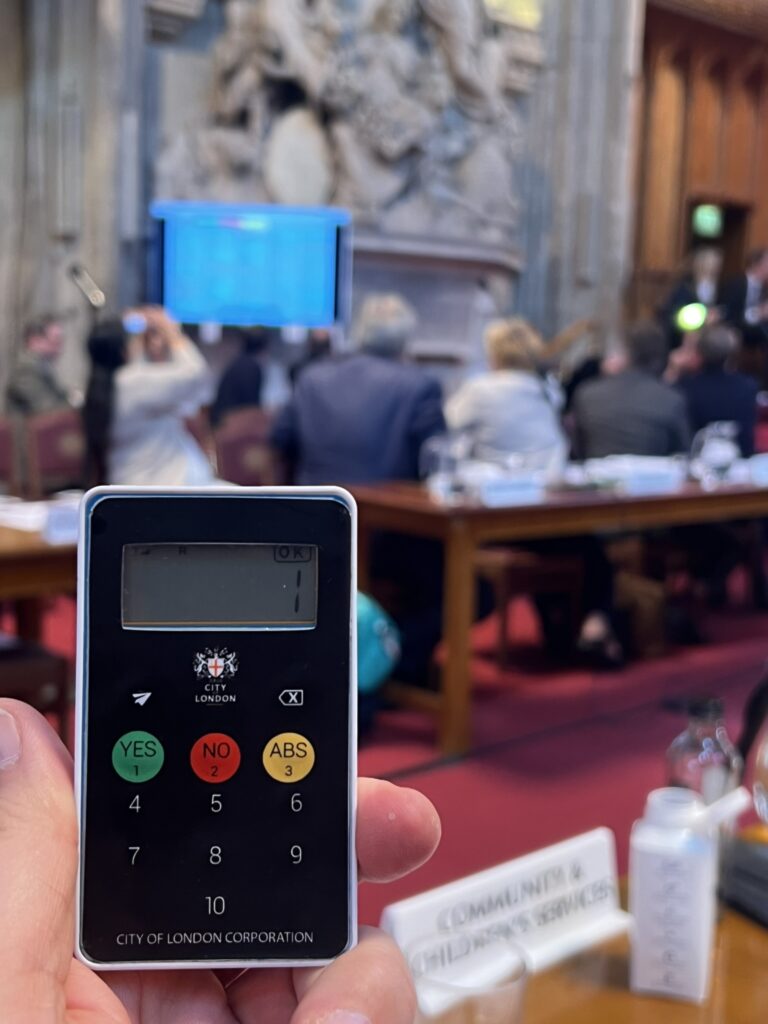What a week it has been! Members of the City of London Corporation’s Court of Common Council have been bombarded with representations from both sides of the campaign – those who want to ban black cabs forever from crossing Bank Junction during the working week (Don’t Break Bank) and those who wish to see black cabs operate through the junction. Each group has been massaging statistics and evidence to set out their case, then bring in as many expert witnesses as possible to support their desired outcomes.
As elected representatives, we must consider consider all of the facts and look at the legal duties placed upon the City Corporation, which includes as a highways authority responsible for public safety, as an organisation responsible for improving air quality, but also as global hub for trade and industry, driving accessibility, creativity and ultimately producing a significant proportion of UK tax.
Outside of the Guildhall today we welcomed representatives from both campaign groups seeking to sway Members on the way into the Great Hall for the debate.
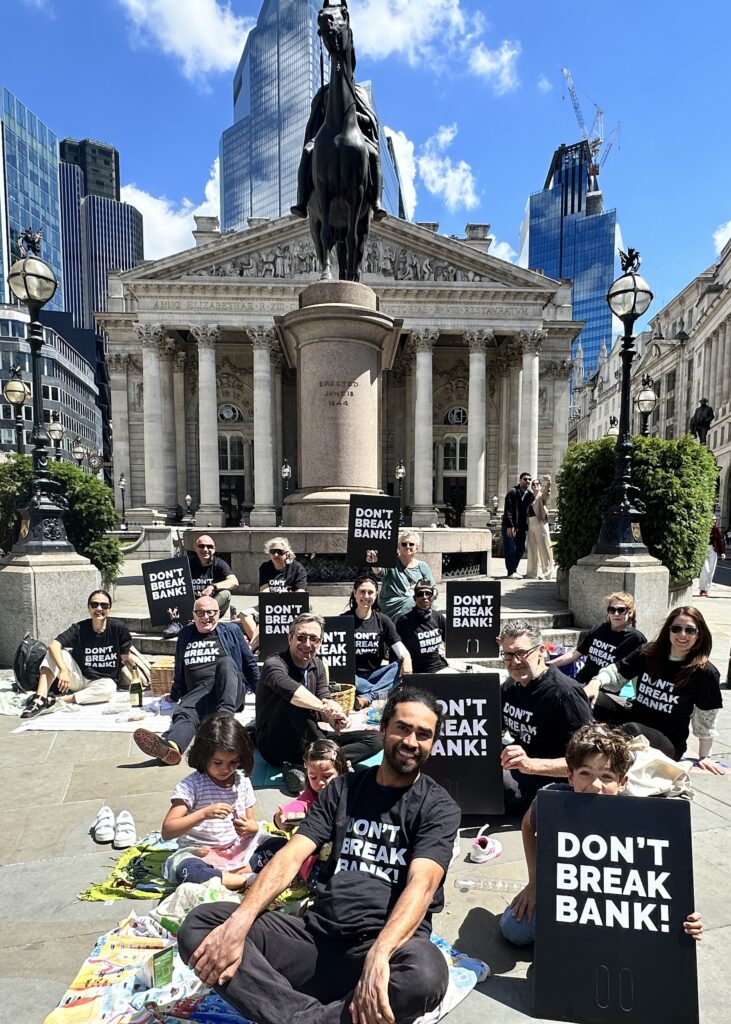
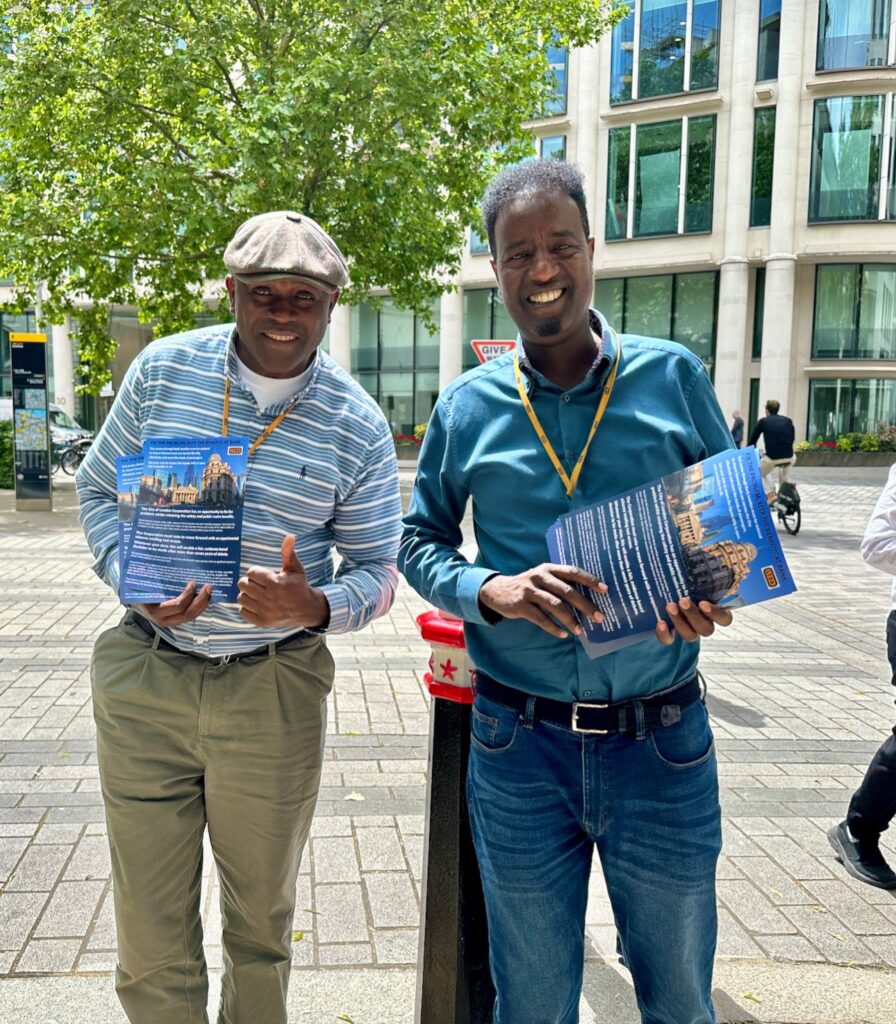
Planning and Transportation matters are mostly delegated to the Planning and Transportation Committee, however, the Court of Common Council (as the most senior governance body in the City of London) had discussed this issue several times over the past few years and sought agreement from the Chairman of Planning and Transportation that he would bring back the options once all of the legally required evidence and surveys had been completed. The Report produced by Officers for the Court’s meeting did not include an option to reopen the Bank Junction and I really congratulate the Chairman of Planning and Transportation for brining an amendment to the Report which allowed Members a clear option. The Chairman, Shravan Joshi, took a lot of flack from Members for doing this, particularly those Members who sit on the Planning and Transportation Committee which had rejected the idea of reopening Bank Junction to back cabs. However, only a handful of the total number of Planning and Transportation Committee members attended the meeting and the Chairman had promised the Court the option, so I thank him for doing what was right and letting the Court decide.
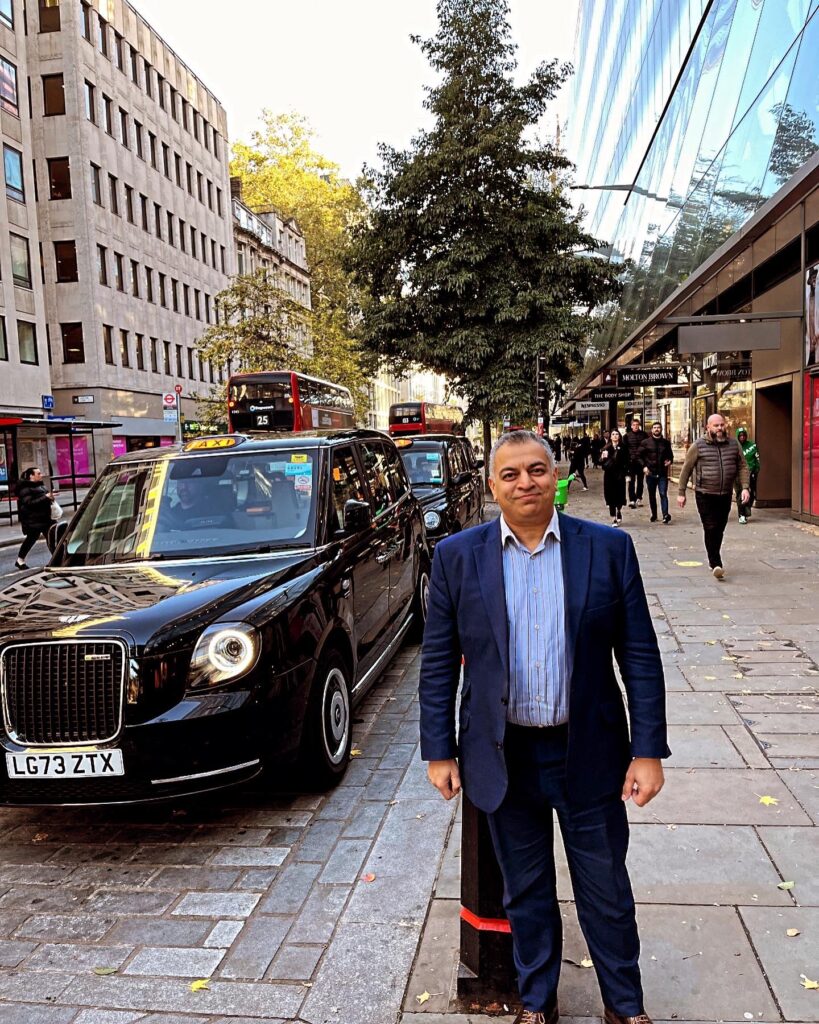
The debate was full of passionate representations, sharing lived experienced and wider context. I personally understood both sides of the argument. On one hand we have limited pedestrian spaces in the Square Mile and a growing population. We need more space for people. We also have an air quality issue. We need less polluting traffic coming through the City. We need more sustainable transport for health and wellbeing and environmental purposes. We need to ensure people are safe on the City’s streets, particularly during rush hour and lunch hours, when more people are moving around the streets.
That said, black cabs, which are highly trained and licensed individuals who have a high electronic vehicle conversion rate. In 25 years, no accident at the Bank Junction has ever involved a taxi. Black cabs can go all the way to the junction, but not over it. Many of the City’s major landmarks sit around the junction, such as The Royal Exchange, Mansion House, The Ned, the Bank of England and A number of hotels, etc. As a point of principle, I believe black cabs should be permitted to go where busses can. I have seen the impact on taxi availability in the Square Mile decline since this was introduced. So much so, we have had to hire in taxi marshals at Liverpool Street Station to encourage taxis in for work. The Hackney Carriage Drivers form part of the Livery of the City of London which should be supported as a skilled industry and highly respected and recognised service provider in London. More than anything though, this debate for me was about accessibility for those with a wide range of needs. Because of the decision to block black cabs going through the Bank Junction, those who rely on taxis to get them to work or hospital appointment or events or meeting have to pay considerably more to go around it. That is fundamentally wrong and is a key consideration under our equalities responsibilities. I also believe that in a City of innovators – a City of measured risk takers – we should welcome pilots. This is a temporary traffic order to see how it works. If it’s a disaster, we roll it back. If it works, we keep it. Surely that’s the right approach to take?
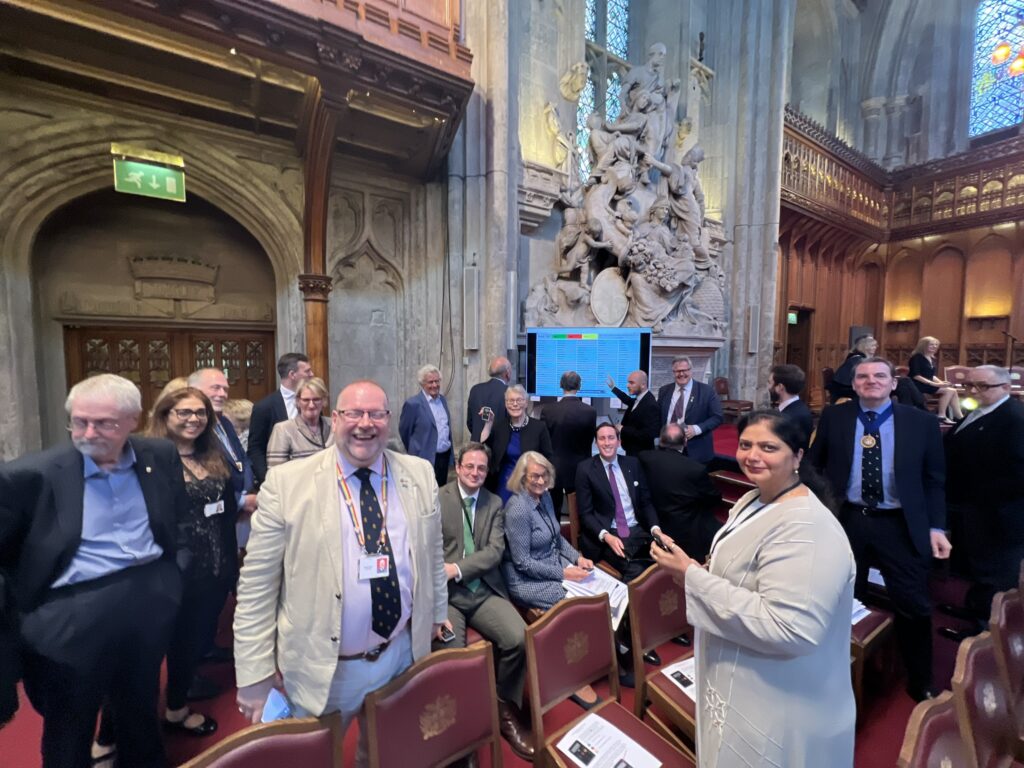
After almost 2 hours of debate where we had heard a large number of speakers from across the Court, speaking both for and against the proposals, many arguments had become repetitive. Therefore, I stood to move standing order 11(10), which moves a motion that “this question shall now be put”, which essentially means that I call a vote of all Members as to whether to end the debate and move to a vote or continue the debate further. Thankfully a large majority agreed to end the debate and move to a vote. A vote was taken an carried, however, then a Member moved a motion that the vote should be retaken as a recorded vote, which means that how each individual member votes becomes a matter of public record. To achieve this 10 members have to stand before the division is called, which happened. Usually at this point Members become frustrated as historically it takes about an hour to split the room, set the division lobbies, count and verify the votes, then announce the result.
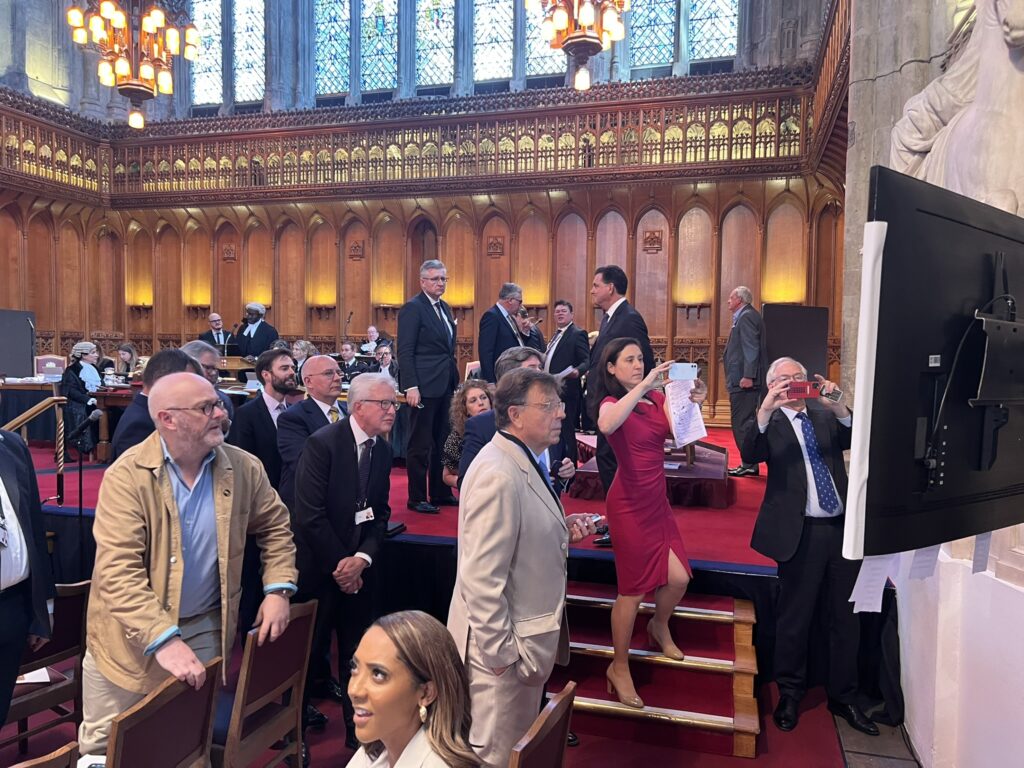
However, this vote was historic as it was the first time electronic voting would be used in the City of London’s 900 years of existence! You can see from some candid photos I managed to take, the excitement on Members faces watching the votes tally on screen was riveting (I know, I need to get out more!) Thankfully the final tally was overwhelmingly supportive of the motion with 57 for, 21 Against and 1 abstention.
City Corporation Transport Officers will now be asked to draw up proposals for an experimental traffic order, to allow taxi access to Bank Junction at all times while continuing to restrict other traffic, including private hire vehicles, between 7am and 7pm, Monday to Friday. Restrictions have been in place since 2017 to limit the junction to use by people cycling and buses only.
It is important to note that wider improvement works to Bank Junction, have been ongoing to make the area a safer and more pleasant place to travel through and visit, as part of a strategy to:
- Reduce casualties by simplifying the junction;
- Reduce pedestrian crowding levels;
- Improve local air quality; and
- Turn Bank into a place to spend time in rather than pass through.
The final phase of Bank Junction works will finish on 30 June, delivering further footway widening, new paving, kerbs and wider pedestrian crossing points. Trees and in-ground planters will be delivered on the streets, as part of the City Corporation’s Climate Action Strategy which commits the organisation to supporting the achievement of net zero for the whole Square Mile by 2040.
These temporary arrangements would run for a maximum of 18 months, during which time a monitoring exercise would be carried out to assess impacts on traffic, safety and access. A public consultation will also be carried out at this time. A final vote at the City Corporation’s Streets and Walkways Sub Committee would then take place to decide whether the changes become permanent, or return to the current arrangements.
Overall, a good and sensible decision in the City of London. A campaign well-led by Deputy James Thomson and Alderman Tim Hailes.
